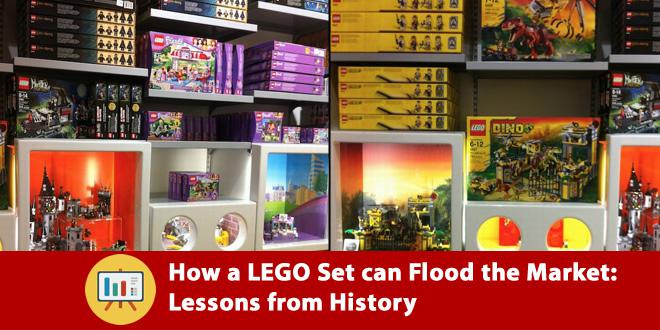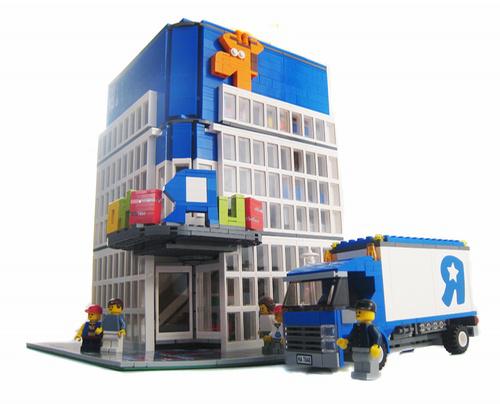Leaderboard
Popular Content
Showing content with the highest reputation on 11/29/2016 in Blog Articles
-
"Should I invest in the Fire Brigade?" "Yes." "No." "Maybe so." "It has been available for way to long. Collectors and investors already have all that they need. You will have to wait a LONG time before the set appreciates." "It is a modular. That alone will make the set a winner. " I have seen this conversation take place in the Brickpicker forums many times. The most common reply that I saw said something like "Everybody's brother (and dog and cat and pet gold fish) has one of these. Don't risk your money." While very knowledgeable people took both sides, it is clear that the Fire Brigade has been a winner - but why didn't this set fail? The Fire Brigade was available for five years, wasn't it? Most importantly, is a repeat possible? The Orc Forge was a steady investment. People loaded up on these sets and bought more whenever possible. What made it better was that if you spend $75 dollars or more, you got free shipping and (depending on the time) a free polybag or minifig. We have not seen the predicted value surge. The set can still be bought at $60 dollars - the price that it was hovering around right before it retired. This set has a bright future, but the results have not been as expected. These are two very different examples. One had very low expectations and performed remarkably. The other had very high expectations. Even though the Orc Forge is still appreciating, the Fire Brigade was the better investment. Both sets were bought in large quantities by investors. Now before everyone jumps on me in the comments telling me "The Orc Forge is still appreciating," I would like to clarify that I do not think that the Orc Forge is a bad investment, but that it is appreciating slowly. I am suggesting that the reason for this slow growth could be because it has flooded the market. In this article we will discuss whether a set can "flood the market" or not using past examples. What can a market flood do to the value of a set? Part I: The bubble Oh boy. Here we go again. While the bubble is talked about a lot in the forums and is quite a controversial issue, there are a few things we can learn from this concept. As more people become LEGO investors, there will be an increased demand and availability for certain sets. Most likely, the market will not crash in one big explosion. It will start with cracks at the foundation, that creep up to the top, eventually destroying the secondary market for LEGO (if there is such a thing as a bubble.) Some of the cracks could be caused by flooding the market. We should start paying attention to how many sets flood the market compared to how many are good investments. What I am trying to point out is that IF there is a bubble, we will continue to see a rise in the numbers of sets bought which could lead to a flood in the market. Not something to spend much time fretting over, but something to consider when buying a set. My personal opinion is that IF the market is flooded, the following buying frenzy will pick the market up from the dust, and we will continue to live happily ever after buying and selling toys. Part II: What is the effect? I will use the Orc Forge as an example in this part. We can all see that the Orc Forge has not been a failure, however, this set has not lived up to its positive predictions. I believe that the Orc Forge could be worth $70 to $80 dollars if so many people had not bought it. The Orc Forge, although with a positive appreciation at about 150% of its retail price, can be found in large amounts on eBay. This was a popular product with investors - maybe a bit to popular. Minecraft: The First Night is not retired yet, but its popularity went down a bit when it became widely available. When considering a set to flip, resale value can be inversely proportional to the availability of a set. This can also be true when considering a set that you think is flooding the market. I do not believe that a set can become a complete failure because it has been widely available and distributed. When a set is bought in large amounts, it tells us that it is popular. There are always new LEGO fans and buyers that will be interested in old sets, no matter how available they were. As more are bought, the availability will go down, and the set will grow in value. If a set does flood the market, it might slow its growth down a little bit, but I think that that is the most that it will do. Part III: How does this happen? A set can flood the market when someone predicts early retirement and people buy lots of the item, expecting it to no longer be available at retail price. Here is where I would like to point out a few facts: The Orc Forge hung around for a while, allowing many people to buy lots of them. The Fire Brigade did not wait before it retired. It sold out, and then it was retired. This is an important fact that we should notice. From this, I have drawn the conclusion that a set does not flood the market in its life time, but in its last few days when the buying frenzy occurs. Part IV: The Fire Brigade True, lots of people had the Fire Brigade, but it had a quick retirement, putting people who did not have this set into panic mode. The Fire Brigade is also a modular. People new to the LEGO hobby that love the modulars will want to complete their collection, and it will not take much time before this set becomes known as one of the well-perfoming sets of the past. Part V: How do I get Fire Brigades instead of Orc Forges? It is always better to invest sooner than later. Sets like the Fire Brigade disappeared quickly. As sets get older, retirement becomes inevitable, and you have the recipe for another Fire Brigade. Sets like the Orc Forge, however, stay around longer than expected. They can be a good investment, but they take more time to appreciate. Sets like the Orc Forge are easy to predict, but sets like the Fire Brigade are almost impossible to predict. Again, the only way to end up with a better set is to buy sooner than later. Part VI: Summing it up Even though it is very possible for a set to flood the market, we must realize that a flood of the market alone cannot make a set fail. Do not let one aspect alone keep you from buying a good investment. I hope you have enjoyed this article. Even though it was short, I tried to include helpful and interesting information. If you disagree with me or have your own opinion about this subject, please share it in the comments. Thanks for reading!1 point
-
"OUR EXCLUSIVE" Those two little words on Toys R' Us' website in regards to the Grand Emporium (10211) sparked a minor uproar recently among Lego investors. What does this mean? Will it change the Emporiums expected immanent retirement? Will 10211 languish forever at inflated TRU prices post EOL ala' Vampyre Castle? Should we all dump our large and exclusive sets in favor of poly bags and mini figures? Breath people, take a step back and chill. I, humbly, submit that it will have no impact what so ever. First the obligatory history lesson. Released in 2010 Grand Emporium (10211) is part of Lego's modular building line. It has 2,182 pieces and comes with 7 mini figures, all for a MSRP of $149.99. As of the first quarter of 2014 it is considered among the favorites to be the next modular to be retired by Lego, and as a corner building and large exclusive the set is expected to perform well post EOl. While TRU may consider The Emporium to be theirs, Wal Mart and Target may beg to differ. 10211 is available on both their websites, although Target has it listed for $159.99. (As of mid April 2014) This may be residual warehouse stock that needs to sell through but, I find that unlikely as the set has gone OOS at Target at least once since the TRU exclusive designation. It is also still available at S@H for regular retail, currently back ordered, but can still be purchased. There is precedence for TRU making an exclusive out of a large, close to EOL, set that was previously more widely available. Set 9468, Vampyre Castle, from the Monster Fighters line was a widely available set that drew the "Our Exclusive" badge at TRU close to EOL. 9468 was also expected to perform well after retirement, but hasn't done as expected. First off, Vampyre Castles' official retirement date is February 1, 2014. Given the very brief time frame and TRU's inflated prices this set simply has not had sufficient time to sell out, it cannot and will not appreciate until that happens. Second, it's only been retired for two months. Patience, wait it out. 9468 had an MSRP of $99.99, TRU has it for $109.99. Vampyre Castle is no longer in production, so whatever stock that TRU has is it. In this case OOS on TRUs website is the new "retired". One of the core principles of investing is "Buy and Hold". With this type of investment strategy TRU claiming a post EOL set as an exclusive and keeping it in the general marketplace a while longer is of little concern. Once Lego quits producing a set it's only a matter of time before that set is gone from the wild and the secondary market will take over. Will TRUs actions cause this to take an extra few months? Sure. Does it make any difference in a sets price ceiling two years later? Not in the least. If such a brief amount of time was such a detriment to a sets performance post EOL no one would own SSDs or Death Stars or Fire Brigades or... The other side of this is the Technic line which had been a TRU exclusive for many years until very recently. Anyone invest in Technic while TRU was its sole US seller? Of course and with some very nice returns. Unimog, tracked crane, or quad bike anyone? The whole point of this is to not over react. TRU keeping a modular alive a few extra months in no way will harm your future returns. Will this continue with other modulars? Only Lego and TRU know that answer.1 point




